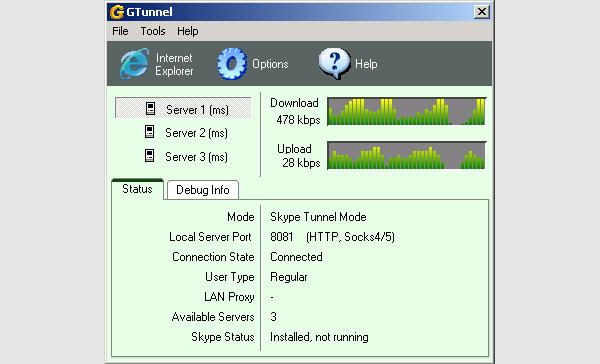Proxy servers are beneficial because they act as mediators between your computer and the internet. They make online requests for you, and then they return the requested information. If you want to create a proxy server yourself, know that it isn’t as difficult as it seems.
Read on for more details about proxy servers, their uses, and instructions for creating a proxy server. Note that this article will provide instructions for creating a proxy server using the Windows and Mac operating systems.
Proxy Servers 101
What is a proxy server? It’s a mediator or a replacement server. It allows your computer to connect to the internet using a different IP address. In simple terms, proxy servers add an extra layer of privacy to your online presence and can also save a lot of bandwidth in certain situations.

When using a proxy, internet traffic and files can be compressed, and all the unnecessary parts can be left aside (e.g., annoying ads on web pages). Proxies are very useful to companies with a large number of employees on the same wireless network, as they can ease the bandwidth traffic of a single address.
Proxy servers are also faster because they look up cached website versions, without downloading any other unnecessary files. Proxy servers can be divided into two simple categories, private and public. Generally speaking, private proxies are much faster because fewer people use them. Private proxies are also far safer for the very same reason.
In terms of privacy and security, when compared to a VPN service, a proxy server is far less effective. If you’re looking for a VPN, check out NordVPN, it’s one of the fastest and safest virtual private networks.
Every Proxy is an Android app and cannot be installed on Windows PC or MAC directly. Android Emulator is a software application that enables you to run Android apps and games on a PC by emulating Android OS. There are many free Android emulators available on the internet. May 31, 2016 Using a SOCKS proxy server from a Mac OS X system. In the example above, the SOCKS proxy is not being used, though the port is set to 1080 and the SOCKS proxy server IP address is the localhost address 127.0.0.1. To configure a proxy server on your Mac computer, follow the steps below.
The Uses of Proxy Servers
Proxy servers are mostly set up by schools, employers, and other places where there are a lot of people connected to the same network. Proxies give the owners of the network a better view and control of what’s going on.
To use the internet in a school, for example, you must connect to your school’s proxy network. Proxies are the reason why network administrators block many websites with ease. But what is defending the proxy server?
Well, it’s probably just a basic firewall. That’s how the sites are restricted, and nothing should penetrate the network. If there are any breaches to the firewall, you can bet they’re coming from malware or an intruder to your network.
You don’t need to own a business, or anything else to set up a proxy. Feel free to install it in your home, if you have multiple devices and want better control over the household’s internet use. Spoiler alert, your kids aren’t going to enjoy a proxy as much as you will!
How to Create a Proxy Server on Windows
There are two basic ways you can create a proxy server on a Windows computer. One is with an automated script, and the other method is manual. Let’s start with the instructions for using the script:
- On your Windows computer, launch the Settings (Start>Settings).
- Click on the Network and Internet option.
- Click on Proxy settings.
- Enable the Use Setup Script option.
- Enter the script address you were given (by your employer, school, or another server owner.) and select Save. You can then exit the settings, and the script should become effective immediately.
The other way around is creating a proxy server manually:
- Once again, open your Windows Settings.
- Select Network and Internet options.
- Select Proxy.
- Enable Use a Proxy Server under the Manual Proxy Setup tab.
- Enter the IP under the Address tab, and the Port number in the appropriate field.
- When you’re done, Save the changes and exit this menu.

How to Create a Proxy Server on Mac
Creating a proxy server on Mac computers isn’t difficult either. Here’s how to do it:
- Start the System Preferences menu.
- Select the Network tab.
- Find the Advanced option and select it.
- Then, select the Proxy option. Here, you can set up the proxy automatically if you choose the Auto Proxy Discovery, and your computer will configure everything on its own.
- Alternatively, you can do it manually. Then, you must click on the type of proxy, enter its port, and address in the appropriate fields (port is the smaller one). You might also need to enter the proxy server credentials in case the server is password protected.
- When you’re done, click on OK to save the changes and create the proxy.
You’ll notice various types of proxy servers. HTTP is the most popular one, but it isn’t very safe, while the HTTPS is a more stable version of HTTP. Finally, SOCKS has many uses, e.g. it’s excellent for torrents, but it’s significantly slower than other types of proxies.
Are Proxy Servers Enough?
Proxy servers are handy, depending on your needs. If your chief concern is security, and online privacy, then using a VPN service is a better choice. Still, proxies are very popular and have many uses. Schools and workplaces, for instance, couldn’t function without them.
Free Proxy Server Software For Macbook
Are you setting up a public or personal proxy server? Let us know in the comments section below and tell us if you’re satisfied with the results.